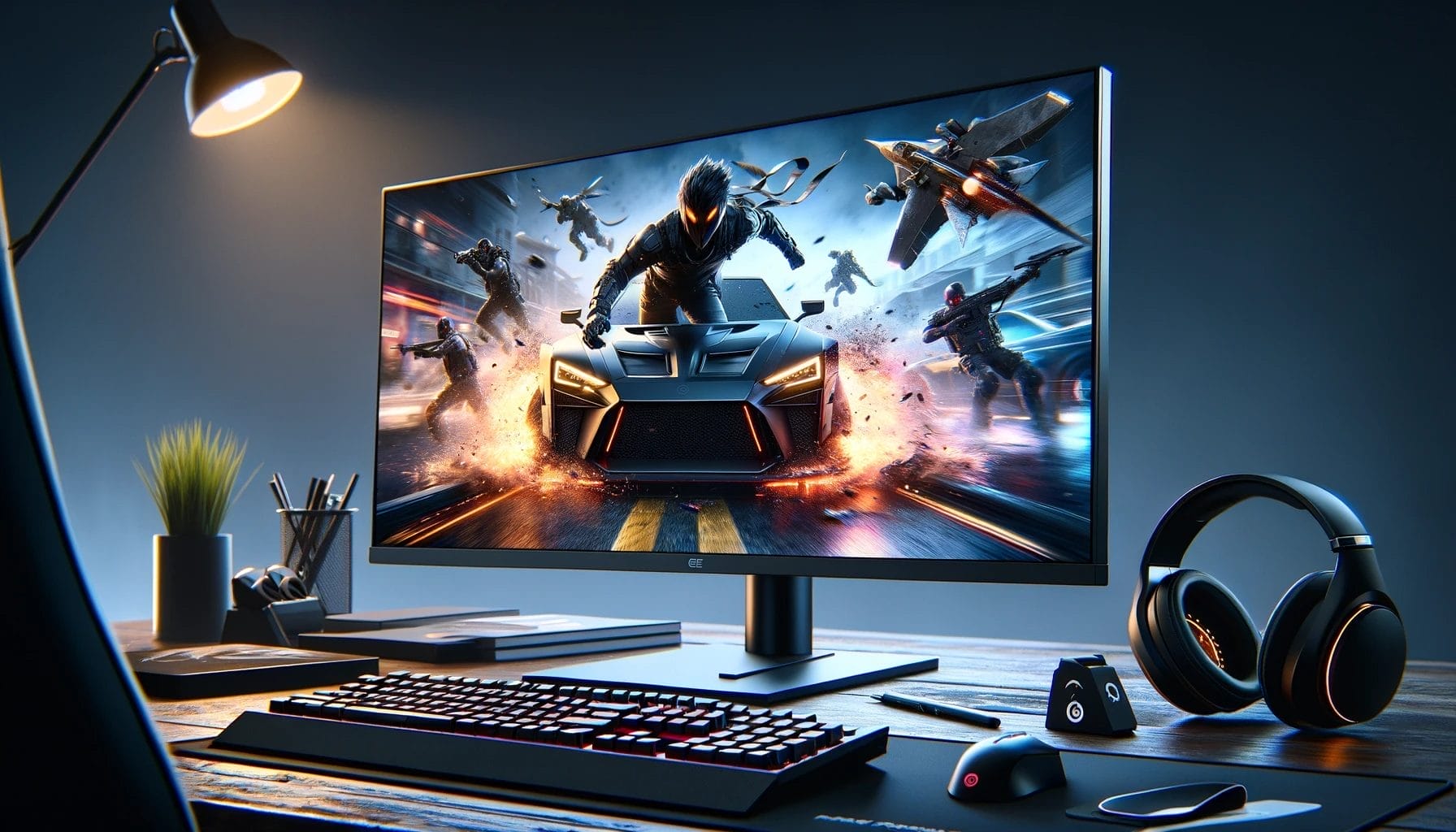Ultimate Monitor Guide: Mastering Refresh & Response

Plunge into the cryptic language of your display; get ready to embark on a journey as a tech sleuth, determined to decode the enigmas of refresh rates and response times.
High refresh rates mean smoother visuals, but they must match your graphics card’s output to prevent screen tearing.
You’ll also learn why rapid response times reduce input lag, keeping you perfectly in pace with your gaming or creative endeavors.
Moreover, this guide explores how pixel color transition impacts clarity and how sync technologies can optimize your experience.
You’ll discern the differences between panel types and discover how to select the optimal settings for your specific needs.
Equip yourself with the knowledge to make informed decisions and enhance your screen performance.
Let’s delve into the details and elevate your viewing experience.
Key Takeaways
- Refresh rate refers to screen refreshes and affects the smoothness of the image.
- Input lag is the delay between inputs and on-screen action, and lower input lag is better.
- Response time is the time it takes for pixels to shift colors, and lower response time means less blur.
- Different monitor panel types have different strengths and weaknesses, such as TN panels having fast response time but lower image quality.
Understanding Refresh Rates
When delving into the intricacies of refresh rates, it’s crucial to understand that they represent how many times per second your monitor updates with new information, directly influencing the fluidity of motion and the overall visual experience on your screen. The refresh rate benefits are manifold:
- A higher rate can significantly reduce the perception of motion blur, making fast-paced sequences in games and videos appear more crisp and seamless.
- It’s not just about aesthetics—higher refresh rates can minimize the impact of input lag, that dreaded delay between your actions and their on-screen response.
- This reduction in lag is critical for competitive gaming, where every millisecond counts.
- Therefore, investing in a monitor with a high refresh rate is a strategic move to enhance your visual performance and responsiveness.
Deciphering Response Times
Understanding response times is essential. It’s the measure of how swiftly a monitor’s pixels can change colors, directly affecting the clarity and sharpness of moving images on your screen.
The importance of response time in your monitor’s performance can’t be overstated. It’s pivotal in reducing motion blur and ghosting, particularly in fast-paced content where every millisecond counts.
The lower the response time, the more fluid and crisp the motion appears, providing an immersive viewing and gaming experience.
The impact of panel type on response time is also significant. TN panels typically offer the fastest response times, making them ideal for competitive gaming.
IPS panels, though historically slower, now feature Fast IPS technology, improving their speed considerably.
VA panels, while offering better contrast, often lag behind in response time, leading to potential motion artifacts.
Comparing Monitor Panel Types
Exploring the differences between TN, IPS, VA, and OLED monitor panels reveals distinct advantages and limitations that can significantly influence your viewing experience and gaming performance.
When considering TN vs IPS: Pros and Cons, you’ll find:
- TN Panels: Fast response times and high refresh rates, but poor color reproduction and viewing angles.
- IPS Panels: Superior color accuracy and viewing angles, yet potentially slower response times and higher costs.
- VA Panels: Excellent contrast and image depth, with slower response times, which can affect fast-paced gaming.
- OLED Panels: Unmatched color quality and contrast, with virtually instantaneous response times.
- OLED vs VA: OLED generally outperforms VA in response times and color vibrancy, but VA panels offer a more budget-friendly option with decent performance.
Choose wisely, as each panel type offers a unique balance between performance and visual fidelity.
Sync Technologies Explained
To eliminate screen tearing and improve your gaming experience, it’s essential to understand how sync technologies like V-Sync, G-Sync, and FreeSync work in conjunction with your monitor’s refresh rate.
V-Sync limits your GPU to avoid pushing frames beyond the display’s capabilities, preventing tearing but often at the expense of increased input lag and stutter during FPS drops.
In contrast, G-Sync and FreeSync dynamically adjust the refresh rate to the GPU’s output, providing a fluid experience without the latency penalty.
When considering V Sync vs G Sync, G-Sync is proprietary to NVIDIA, while FreeSync, now with compatibility with Intel GPUs, offers a similar experience without the brand exclusivity, making it a versatile choice for gamers with different setups.
Selecting Optimal Refresh Rates
Selecting the optimal refresh rate for your gaming monitor hinges on balancing your desire for fluid visuals with the capabilities of your hardware setup. The refresh rate benefits are significant, impacting not just the smoothness of motion on the screen but also the responsiveness of your inputs.
Here’s what you need to consider:
- 60Hz: Suitable for casual gaming and standard computing tasks.
- 120Hz/144Hz: Ideal for competitive gaming; reduces motion blur and input lag.
- 240Hz: Offers diminishing returns for most gamers, but can edge out competition for eSports enthusiasts.
- Refresh Rate Matching: Ensure your GPU can consistently deliver frames at your monitor’s refresh rate to avoid stutter.
- Impact on Input Lag: Higher refresh rates can reduce the perception of input lag, offering a more responsive gaming experience.
Conclusion
Now you’ve got the lowdown on refresh rates and response times, and how they’re pivotal for peak performance.
Consider panel types and sync tech to fine-tune your choice. Remember, higher refresh rates reduce tearing, while rapid response times sharpen motion.
Tailor your monitor’s specs to your gaming needs and you’ll not just play, but dominate. Choose wisely—your ultimate gaming experience hinges on these critical details, so invest in the right display and game on with unmatched precision.

